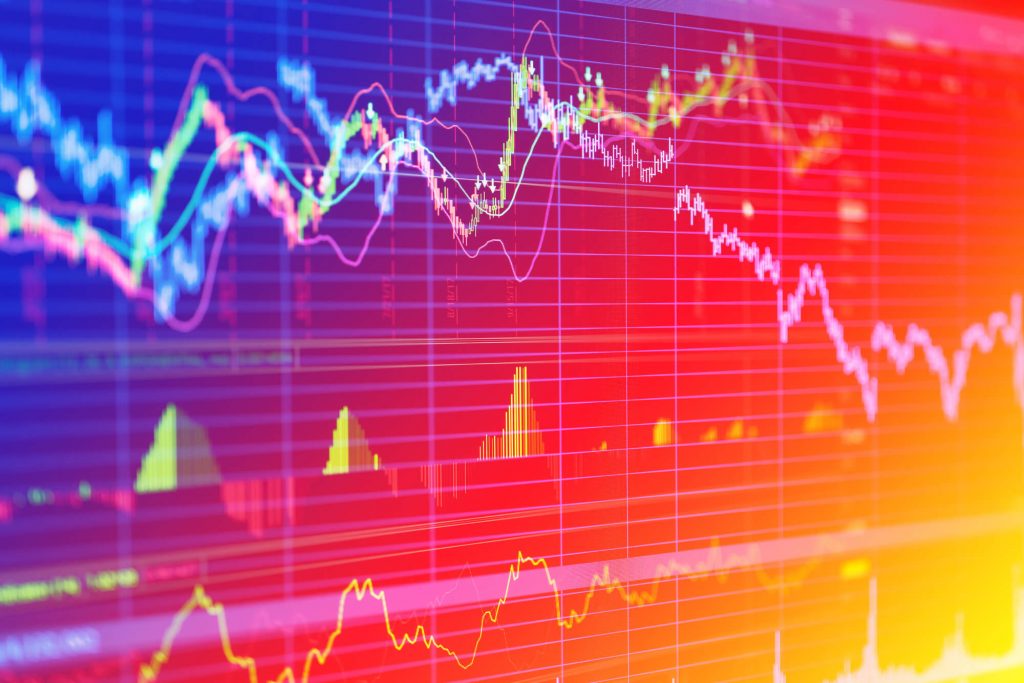The rise of the retail investor has generated much more attention and interest in day trading. In essence, day trading is a strategy that involves quickly executed transactions on certain investments over a single day.
Many new investors are intrigued by day trading because they’ve seen a few investors make huge profits from the practice — much more than they would have with long-term investment strategies.
Conversely, a sizable majority of people who get into day trading don’t succeed. It’s an enterprise fraught with risk. People who aren’t prepared for the intensity and complexity of day trading are almost guaranteed to fail. It takes more leg work, time, and expertise to become a successful day trader.
If you’re undeterred by the risk, here are some tips about how to get started in day trading.

What is Day Trading?
There are two basic styles of traders: Passive and aggressive. Common, everyday traders who make relatively few transactions — the “set it and forget it” types who buy into commodities and watch them grow in value — are passive. Their gains are steady, slow, and usually modest.
Day traders, on the other hand, are about as aggressive as one can be.
Day trading is the practice of buying and selling security, often a few times within a single day. Day traders aim to turn a quick profit from short price fluctuations. The typical day trader makes several trades in a single session to make significant gains.
Day trading is closely aligned with events that trigger short-term market gains or losses. These may be earnings reports, news events related to the economy, interest rate hikes or cuts, or just plain market psychology.
For this reason, day traders need to be a little more nimble and clever than the rest of the market. Their transactions usually involve higher amounts of leverage and short-term planning. They may own commodities for as little as half a second. They need to invest more time in their trading activity and to have a stomach for the occasional bad day. The risks involved in day trading are much higher than long-term, passive investing.
Why is day trading so attractive to some? You may have already figured out the reason: The profit potential is great. Of course, so is the potential for loss!
The difference between a good day trader and a mediocre or bad one can be razor-thin. Some day traders can see huge jumps in income. But day trading is not something that one can just start doing. You’ll need to make plans, set limits, develop strategies, and practice. Here are some day trading tips when you want to enter the market.
Deciding What to Trade
Since day trading is a high-risk, high-effort activity, it’s most suitable for volatile, liquid commodities. The aspiring day trader should pick one asset class in which to specialize, rather than swing for the fences in many markets.
The most common commodities day traders target include:
Stocks
Stock trading is the primary building block of the investment market. It’s represented by the basic buying of shares in public companies. Shareholders gain or lose as share prices rise or fall.
Forex
The foreign exchange market trades currencies of different countries or regions. Retail traders earn profits when a currency’s value changes over time. Exchanging U.S. dollars for euros (and vice versa) is the most common forex transaction.
Futures
Futures are contracts to buy or sell a given commodity — such as fuel, raw materials, precious metals, or stocks — at a certain date for a certain price. Investors buy futures for the possibility of earning profits when the price of the commodities increase.
How Much Capital You’ll Need
Since day trading is such a high-risk endeavor, investors need to have a minimum amount of capital to invest with. The more that capital a person can afford to reserve for day trading, the easier it will be for them to withstand losses. Your minimum capital depends on the commodity that you’ll be trading, as well as the limits your brokerage sets.
For stocks in the U.S., there’s a legally required minimum of $25,000. If your stock trading account balance dips below $25,000, you can’t trade until you deposit funds to get your balance back to that level. It’s better to start with a slightly higher minimum — like $30,000 or $40,000 — to allow for losses without bringing trading to a halt.
You can enter the forex market with much less capital. Most brokers require a minimum balance of $100 for forex trading. But the more you can afford to put in, the better the chances are that you’ll earn decent revenue. $5,000 is a good starting point.
There’s more wiggle room in the futures market. Investors use leverage to buy contracts for a fraction of what they’re expected to be worth. Starting with at least $10,000 for futures is one of the most common tips for day trading.

Tools You’ll Need
Day-trading is a fast-moving, intensive activity. It involves many transactions over a few hours. To be effective, there are a few day trading tips, tools, and actions you need to get and take before you start.
Computer
Your computer will be the heart of your day trading operation, and it needs to be powerful. An old, slow computer is detrimental to day trading. One that lags or crashes takes away your ability to execute on quick transactions. Look for ones with powerful, fast processors.
Monitors
Most day traders use more than one monitor for their computers. It’s not an absolute requirement to have two or more monitors, but it’s one of the best tips for day trading.
Reliable Internet
You need the fastest internet that you can get to day trade — ADSL at the minimum or cable if you can. Slow internet prevents trading platform pages from updating at the rate you need to be an effective day trader.
Brokerage Account
Brokers like Fidelity, TD Ameritrade, E*TRADE, and Interactive Brokers are the entities that execute your buying and selling commands. Most of them don’t require a minimum account balance (although you’ll need to start with something).
Since day traders execute a lot of daily transactions, it’s a good idea to focus on brokerages with lower fees. Per-transaction charges will eat into your profits. But you also need a broker who’ll give you good technical support. If they charge a few pennies more than a brokerage with poor or non-existent support, it may be worth the extra cost.
Avoid using a bank for your brokerage account; their fees are usually high and their brokerage services aren’t as customizable as investment-oriented institutions.
Trading Platform
Your brokerage account will include some kind of trading platform. But you have plenty of options for brokerage apps and services. Certain platforms are more optimized for learning how to get started in day trading. Research the ones you’re considering before you sign up. Try a few of them out and decide which one works for you.
Set a Schedule
Day traders operate on consistent schedules. One of the most important day trading tips is to decide what your schedule will be and to stick with it religiously.
Since day traders may be dealing with international markets, the hours in which they will operate will differ. If you trade in stocks, your hours will align to whenever the New York Stock Exchange (NYSE) or Nasdaq operates. If you’re trading international currencies on the forex market, you’ll have a broader range of times to work with.
But you won’t be trading all day long. You’ll likely only be trading two to three hours a day (another element that makes day trading attractive to many). This is because the mechanics of day trading rely on those portions of the day when commodity prices are most volatile.
Take the stock market. Most rapid price movements that day traders profit from occur in the first hour or two after the NYSE’s morning bell. They fluctuate again in the final hour of the business day. So your day trading schedule might be from 9:30 am to 11 am and again from 3 pm to 4 pm. That’s Eastern time, so you’d have to adjust those hours if you’re in a different time zone.
Futures trading has a slightly broader range. Many futures traders start working before the NYSE opens. This time, unsurprisingly, is called “pre-market.” The moment the market opens up, futures trading volume increases significantly. People who have done pre-market trading stand to reap bigger rewards from volatile price jumps. A futures day trader, therefore, may have a schedule of 8:30 am to 11 am Eastern.
Forex trading can happen at any time of the day since forex traders deal with currencies around the world. If you work with the euro currency, you’ll stand to gain the most in the late-night hours when European exchanges are open.
The greatest trading volume usually happens between 1 am and noon Eastern time for forex. When the NYSE and European exchanges are open at the same time, trading volume is exceptionally high. This overlap typically happens between 9:30 am and 10 am Eastern.
Of course, you’ll adjust your forex trading schedule accordingly if you trade currencies in other parts of the world, such as the Japanese yen, the Swiss franc, or the British pound.
Managing Risk
One of the most significant tips for day trading is to limit your risk exposure. Just because you have $50,000 in capital doesn’t mean you should invest all $50,000 in one trading session. You’ll be investing significantly less.
Risk management in day trading is governed by setting limits. You may decide to buy a stock when it reaches a certain price level, a practice that’s called a “limit order.” You may also figure out a point to unload a commodity that’s dropping in value to prevent further losses — this is called a “stop-loss” point.
One of the most common day trading tips suggests that you expose no more than 1% of your capital in a given transaction. So if your capital is $50,000 in total, you’d limit yourself to spending only $500 on each trade. Day traders calculate their positions, determining their limit order price and their stop-loss price so that no more than 1% of their capital is ever at risk.
Many day traders subject themselves to daily limits, as well. One guideline suggests setting a loss limit of 3% of your capital for each day you trade. Using our model of $50,000 in capital, that means if you find yourself down by $1,500 at any point in the trading day, you close up shop and stop trading until tomorrow.
Learn and Practice — for a Long Time
It’s worth reiterating that day trading is an extremely tricky enterprise. Even with the limits you set, you’ll be working with relatively large amounts of money. The competition is furious. You’ll need a combination of market intelligence and single-tracked focus. Those aren’t qualities that most traders come by easily.
To be frank, the chances of becoming a consistently successful day trader are not in your favor. VantagePoint estimates that only 3.5% to 4.5% of all-day traders wind up being successful enough to turn it into a full-time career. “If success is defined as just being negligibly profitable for at least a couple of months,” VantagePoint says, “the success rate is about 6% to 8%.”
That’s why most financial experts insist that you spend a lot of time in trade simulators, paper traders, and practice sessions before launching a day trading career. The longer that you can practice, the better off you’ll be. Even then, don’t expect to make instant profits.
The point in being a successful day trader is to be consistently successful. It’s to develop expertise and intensive strategies that deliver solid results time after time. Relying on luck or emotions is never a good strategy for any kind of securities trading, but in day trading, it can be especially lethal.
Give yourself time to learn how to get started in day trading. Educate yourself about the intricacies of day trading and practice with simulated traders. Most successful day traders will tell you that they took years to earn a decent return. Again…that’s years. When you’re considering getting started in day trading, plan in time frames of years, not months.

Gorilla Trades: Expert Guidance for the Active Trader
Gorilla Trades isn’t strictly for day traders. But our data-driven, proven stock-picking method can support your other investment activities with a strong, profitable financial base. Sign up for a free trial to learn more.




